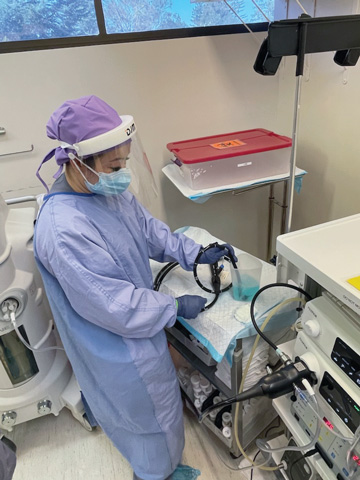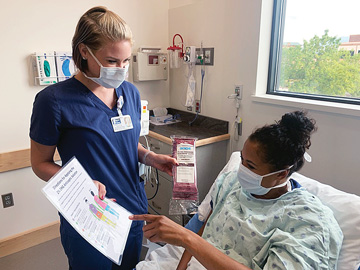While many facilities were shuttered during the pandemic’s first wave, OMNI Surgery Center’s quick action allowed surgeons to use the facility’s four operating rooms for urgent cases when former New York Gov. Andrew Cuomo suspended elective procedures statewide. The extraordinary steps the center in Utica, N.Y., took to remain open and operating earned it this year’s OR Excellence Award for Infection Prevention.
“Our center has always had a zero percent surgical site infection rate, but we also wanted to make sure staff remained healthy throughout the pandemic so they could continue to perform necessary surgeries,” says Amy Porter, the center’s director. “I think we did well.”
The staff’s first order of business was to sanitize and purify the air within the facility. OMNI already had HVAC filters and fresh air circulators that were installed when the center was constructed six years ago. The center purchased industrial-grade negative-pressure air purifiers at the pandemic’s onset. While mobile in theory, the refrigerator-sized units will likely take up permanent residence in the center’s pre- and post-op areas. The devices have a five-stage filtration system that filters 100% of the air in the spaces every four minutes.
“They provide outstanding defense against Sars-CoV-2 particles as well as other contaminants, chemicals, viruses and bacteria,” says Ms. Porter.
OMNI also enhanced its cleaning protocols. Curtains between pre-op and PACU bays that were once sent out to be laundered quarterly now get steam cleaned twice daily, after each shift. Chairs with soft surfaces are also steam cleaned. (Research shows that steam 212°F or hotter kills the COVID-19 virus.)
The facility’s new electrostatic sprayer disinfects high-touch surfaces such as doorknobs and high-traffic common areas, including restrooms, patient registration desks and nurses’ stations. The sprayer uses a cleaner that Ms. Porter says kills 99.9% of germs, including SARS-CoV-2.
Perhaps most importantly, OMNI mandated weekly polymerase chain reaction (PCR) coronavirus testing for all staff, surgeons and other providers. New York required patients to have a negative COVID-19 test result prior to elective surgery, but there were no such mandates for healthcare personnel.
.svg?sfvrsn=be606e78_3)


.svg?sfvrsn=56b2f850_5)